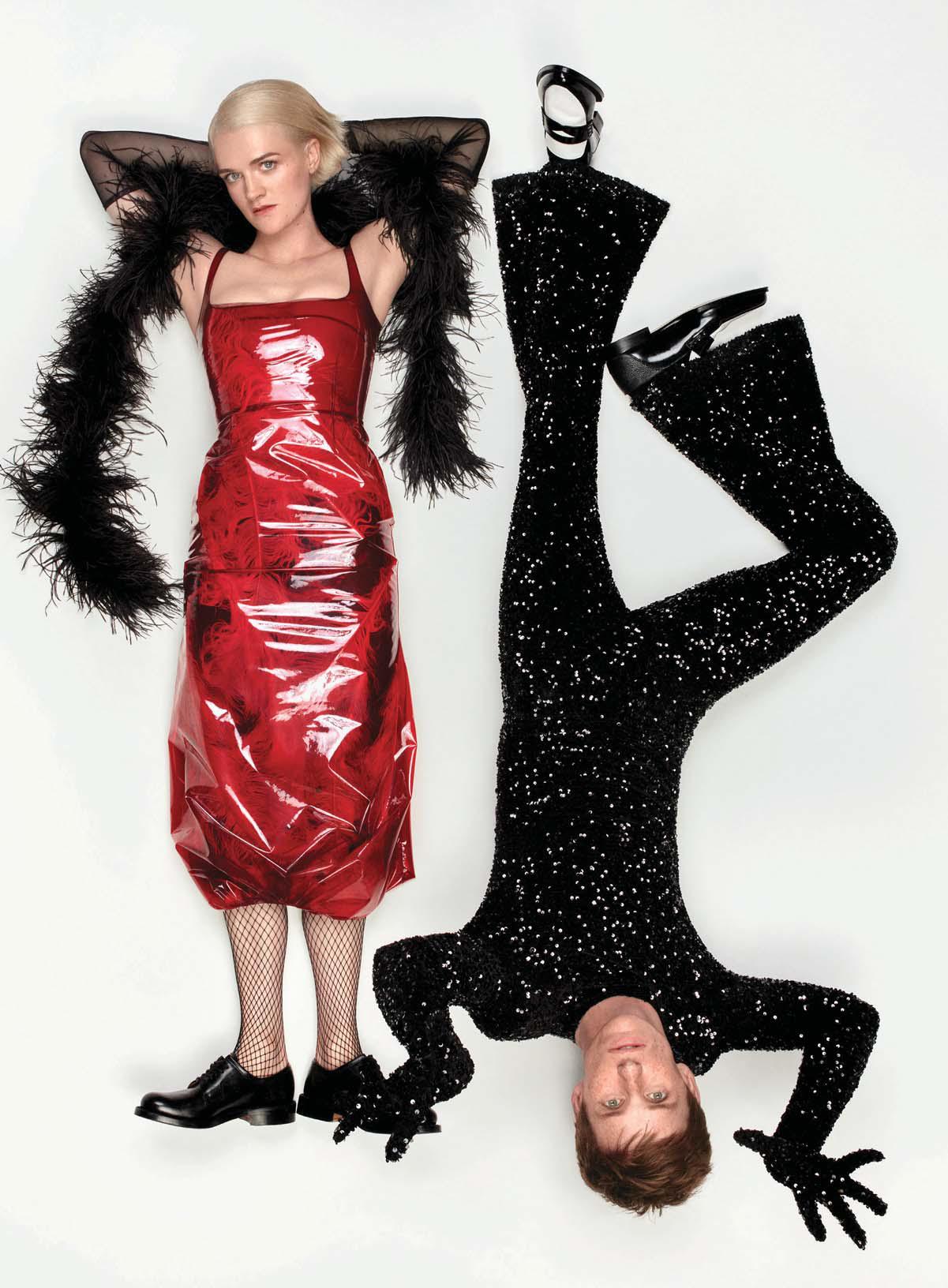
When I was 15 years old, I saw Cabaret for the first time, at a community theater in northeast Ohio. Though I considered myself sophisticated in important ways (I recall that I was wearing a wide-leg Donna Karan bodysuit that evening), my experience as a theatergoer was then limited to The Sound of Music and Ice Capades: Let's Celebrate.
I wonder if my parents, who had season tickets to the theater, knew that the show wasn't exactly "family" entertainment. Set in 1931 Berlin as it careens toward the abyss, Cabaret depicts alternating stories. There's the doomed romance between a fledgling novelist named Clifford Bradshaw and a young singer of supreme charisma (and mediocre talent) named Sally Bowles. And then there's the seedy nightclub, the Kit Kat Club, which is populated with a highly sexualized cast of misfits and overseen by a ghoulish Master of Ceremonies.
The show's ethos-the glamour and terror, the irreverence, the campiness, the unreality-shaped my taste forever, and I knew that I had just experienced one of the greatest works of art ever created. I would never look at theater, or life, in the same way again.
Over three decades later, I've seen more stage productions of Cabaret than any other show, including a revival starring the original Emcee, Joel Grey; I've seen the Bob Fosse film version over 50 times. I've pretty much always got one of Fred Ebb's sardonic lyrics jangling around in my head. Today, it's "You'll never turn the vinegar to jam, mein Herr," and I couldn't agree more.
Youthful exposure to Cabaret also turned out to be a life-changing event for the star of the new production opening this month on Broadway, Eddie Redmayne. "Weirdly, when I was 15, it was the first thing that made me believe in this whole process," he says. Redmayne was a student at Eton when he first played the Emcee; he had never seen Cabaret when he was cast.
This story is from the April 2024 edition of Vogue US.
Start your 7-day Magzter GOLD free trial to access thousands of curated premium stories, and 9,000+ magazines and newspapers.
Already a subscriber ? Sign In
This story is from the April 2024 edition of Vogue US.
Start your 7-day Magzter GOLD free trial to access thousands of curated premium stories, and 9,000+ magazines and newspapers.
Already a subscriber? Sign In

From A to Zac
Zac Posen's arrival at Gap was a surprise to many, yet the former wunderkind of New York fashion is loving every minute of his new life. Irina Aleksander meets him as he goes big and gets ready to dress America.

McGIRR'S MCQUEEN
A year ago, Seán McGirr came out of nowhere to lead Alexander McQueen, one of fashion's most storied and emotionally charged houses. Hayley Maitland meets the genial young Irishman writing McQueen's next chapter.

TESTING GROUND
Sanaz Toossi brings English, her play about the trials of learning a new language, to Broadway.

IN STEP
Margaux Anbouba plays footsie with the final frontier of vintage shopping: shoes.

Through the Looking Glass
Sam McKinniss's Connecticut home is a magical, maximalist mash-up, tying together riotous color, throwback Americana, and the artist's uncanny visions of popular culture.

MAN ON WIRE
ADRIEN BRODY IS DRAWN TO HIGH-RISK ROLES AND FILMS THAT PUSH HIM TO EXTREMES. NOTHING HE'S DONE COMPARES TO THE BRUTALIST.

MIRACLE DRIP
NAD+ infusions have become increasingly popular, promising to magically turn back the clock. But are they too good to be true? Mattie Kahn investigates.

WHEN SPORTS MET FASHION...
Athletes as muses? The stadium as runway? The arena as front row? Fashion and sport needed no introduction, but lately they've become obsessed. Maya Singer reports.

FINAL CUT
\"WE WANT YOU TO GO FOR IT!\" ANNA TOLD ME

SCREEN TIME
Three films we can't wait to see.